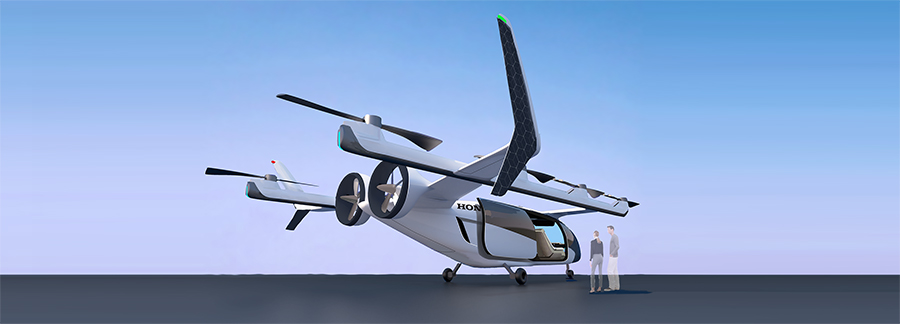
Japanese automotive giant Honda Motor Co. has announced continued diversification of its wide-ranging manufacturing activities with plans to develop electric vertical takeoff and landing (eVTOL) craft as part of its pursuit of renewable-powered advanced air mobility (AAM) vehicles.
Honda officials revealed their intention to enter the increasingly crowded eVTOL sector in an announcement that also outlined plans for developing an avatar robot with a multi-fingered hand, and new space technology for lunar surface operation. The launch of its AAM activities will focus on producing quiet electric aircraft for passenger transport – just one element within its previously stated objective to be selling 100% electric vehicles by 2050. Specifications about the plane were minimal, though Honda did say it hopes to conduct technology verification with prototypes in 2023, before proceeding to test flights of a demonstration model two years later. If the company decides to commit to manufacturing and sales of the craft at that point, it will aim to bring it to market by 2030.
Although press materials are heavy with references to eVTOL, it’s clear Honda’s concerns about battery limitations have led the company to pursue a hybrid power system instead – at least initially. All the talk of all-electric flight notwithstanding, its announcement said the current plan “leverages Honda’s electrification technologies for its gas turbine hybrid power unit… (that) enables the extension of range, which will enable Honda eVTOL to provide inter-city (city-to-city) transportation, where the market size is expected to grow in the future.”
Meaning, its first VTOL planes will have “e” in them, but aren’t likely to correspond to the company’s future vision of 100% electric AAM in their first phases.
Honda officials regard that gas-electric combination a pragmatic compromise in the face limited battery performance vis-à-vis expected operation of AAM aircraft. Their market research indicates mid-range, intra-city flights of up to 250 miles will most frequent use scenarios – a distance surpassing the single-charge reach of most eVTOL. Last July, for example, Joby Aero celebrated what it said was the longest-ever flight of an electric craft without recharging – a one hour and 17 minute outing that covered 154.6 miles.
In order to meet market demands expected to exceed what battery technology can currently deliver, Honda says it will supplement its eVTOLs with additional technologies it has developed the past 73 years of operation.
“In addition to electrification technologies, Honda eVTOL will feature technologies Honda has amassed in a number of different areas such as combustion, aerodynamics and control technologies,” the statement read.
Officials noted, however, that the company remains committed to producing exclusively electric and renewable energy-powered automotive and AAM vehicles by midcentury, and is continuing development of lithium-ion batteries as part of that. Once capacities of those can be increased as their size and weight is diminished, they said, Honda would remove gas turbine components from the craft and manufacture them as full-fledged eVTOLs.
FTC: We use income earning auto affiliate links. More.




Comments